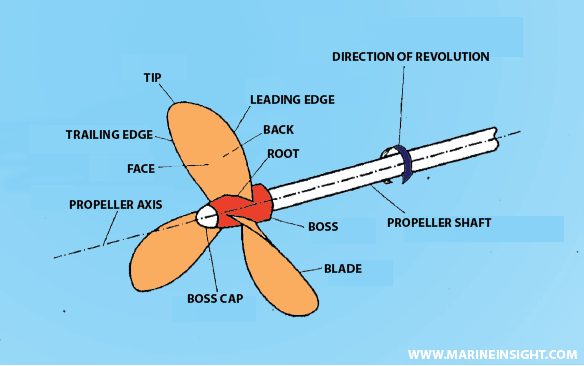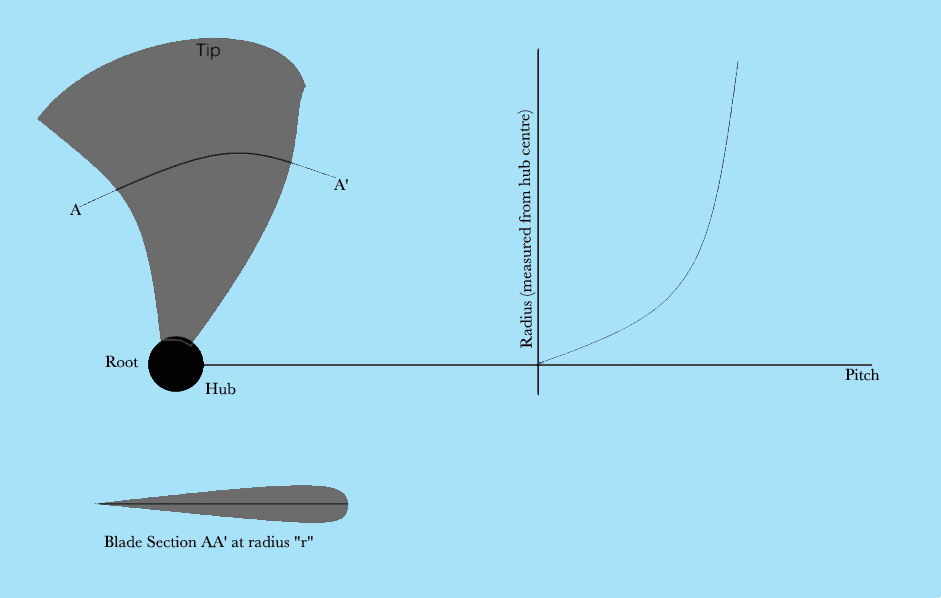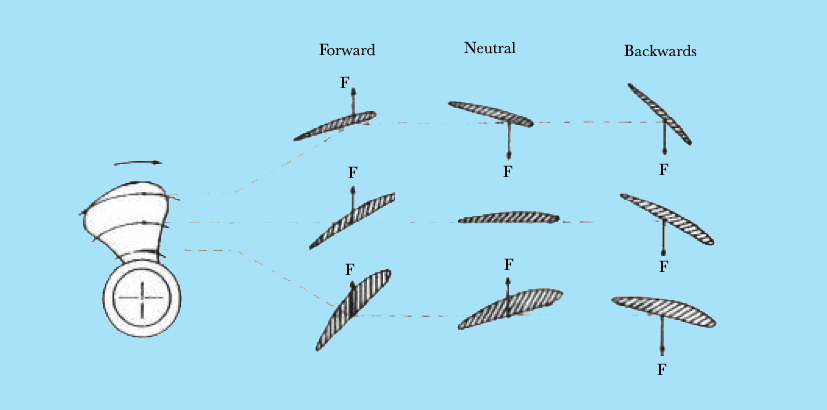Procedure For Renew Propeller on ship
How to Measure Cylinder Liner Bore Wear on ship?
Types of Mechanical Measuring Tools and Gauges Used on Ships
what type of propeller used on ship? Controllable Pitch Propeller (CPP) Vs Fixed Pitch Propeller (FPP)?
Most of the propellers that are used in ships are fixed pitch propellers (FPP). What does this propeller term means? Let’s understand this from a beginner’s point of view.
How to Measure Cylinder Liner Bore Wear on ship?
Types of Mechanical Measuring Tools and Gauges Used on Ships
what type of propeller used on ship? Controllable Pitch Propeller (CPP) Vs Fixed Pitch Propeller (FPP)?
Most of the propellers that are used in ships are fixed pitch propellers (FPP). What does this propeller term means? Let’s understand this from a beginner’s point of view.
If you look at a propeller axially, you will notice a twist in the propeller blade along the length of the propeller hub. It is this twist in the blade that results in the forward motion of the propeller with each rotation.

Parts of screw propeller
It is pretty much what you see on a screw. The angle of the thread is actually what is called the pitch angle. The more the pitch angle, the more distance is travelled by the screw in one rotation, that is, the more is the pitch. Similarly, propellers act on the principle of screw. Hence the term screw propeller.
But what is a fixed pitch propeller or the FPP?
The propeller is designed in a way such that, if you cut the propeller radially at any random radius from it’s centre, then the cut section of the propeller blades will have a certain pitch (magnitude depends upon how twisted it is along the length of the hub). Now if you rotate this cut section in water, the axial distance travelled in one rotation is the pitch of this section. If you vary the radius at which you cut a section, the twist of the blade also varies from the root to the tip. This makes it evident that each section of the propeller has a particular pitch.
The root of the propeller will have a different pitch from the tip of the propeller. So the pitch variation from the root to the tip is as shown in Figure 1. The question now is, if each section has a different pitch, then what is the resultant pitch of the propeller? Answer is the resultant pitch is the average of all the pitches of each section of the propeller.

Blade section and variation of pitch with section
Note very carefully, that the pitch varies along with the blade section (or increasing distance from the propeller centre), but the net average or the net pitch of the propeller remains constant. Such a propeller is a fixed pitch propeller.
Now, let’s go back to the concept of a screw. What if you could somehow change the angle of inclination of the threads along the screw?
If you could, what would you actually be doing is changing the pitch angle and subsequently, the pitch of the screw.This is exactly why the controllable pitch propeller was developed by the industry. We will be dealing with the applications in detail a little later. But for now, it is vital to know the fundamental working of a Controllable Pitch Propeller (CPP) also commonly known as Variable Pitch Propeller.
The twist (to be referred as pitch from now on) of the root section of the blade is always with respect to the angle it makes with the propeller hub. What if we can change the angle of orientation of the root? And since all the other blade sections had their previous pitch angle already, they attain a new pitch angle. In other words, you are able to control the pitch of the entire propeller, by changing the orientation of the root section on the hub. This is done by the means of a hydraulic cylinder.
When the required orientation or pitch of the propeller is obtained, the blades are locked in that position. So the blades are not an integral part of (or not casted along with) the propeller hub. They are mounted on spindles that have axes perpendicular to the shaft axis.

Advantages and Disadvantages of CPP and FPP
The following points will discuss the applications and their relations with the advantages and disadvantages of CPP and FPP systems:
- The controllable pitch propellers can be used to run the ship in forward and astern direction both, without the requirement to change the direction of rotation of the engine. How? Well, the propeller works on the principle of lift generated by each aerofoil section of the blade. What if we can change the orientation of the blade, such that the direction of life force is opposite to what it was during forward running of the ship? That’s exactly what is achieved by changing the pitch angle of the blades, as shown in Figure 2.

Blade sections shown in various pitch orientations
- A non-reversible engine can be used for both forward and astern operation of the ship. Hence, the weight of the engine and propulsion machinery is reduced considerably when compared to what is required in propulsion systems equipped with fixed pitch propellers.
- Since the pitch of the propeller determines the amount of thrust generated by the propeller, a change in the pitch angle can bring about a change in the speed of the ship. So, a controllable pitch propeller is useful in changing the speed of the ship without changing the speed or rpm of the main engine. But why are we focusing on this advantage? What happens if we need to reduce the engine rpm to reduce the ship’s speed? Well, many ships have a shaft driven diesel alternator system. So the rpm of the main engine shaft controls the electric power production on board. In that case, if the speed was to be reduced using a fixed pitch propeller, it would require a reduction in the shaft rpm, which would result in reduction of power generated.
- Due to the above reason, the speed of the ship can be handled from the navigation bridge directly. In case of fixed pitch propellers, the marine engineer needs to be intimidated in order to change the ship’s speed. Therefore CPP technology is used for obtaining faster response of speed change.
- The efficiency of astern condition in case of fixed pitch propellers is less than that of controllable pitch propeller in astern condition.
However, there are many disadvantages of using a controllable pitch propeller to a fixed pitch propeller. It is important to know them too.
- The pitch control mechanism installed in the hub is complicated enough to demand proper inspection at regular intervals. The installation process is also more complicated as compared to that of fixed pitch propeller system.
- Controllable pitch propellers have a very high initial cost. And this cost increases rapidly with increasing diameter of the propeller.
- Due to pitch control mechanisms housed inside the hub, the length and the diameter of the hub is also high as compared to the fixed pitch propeller systems.
To conclude, it is vital to know the applications of controllable pitch propellers. These are used in ships that are required to operate at variable speeds even when operating at constant power requirements. Such ships are tugs, trawlers, ferries, ice breakers, and small scale warships that are equipped with gas turbines.
 RSS Feed
RSS Feed Twitter
Twitter 2:27 AM
2:27 AM
 Around the world
Around the world

 Posted in
Posted in 









0 comments:
Post a Comment